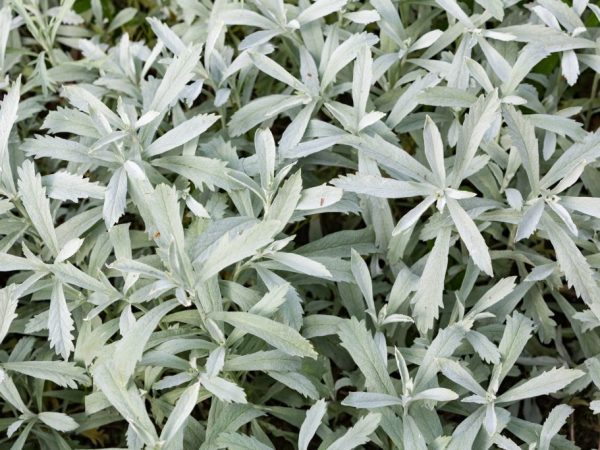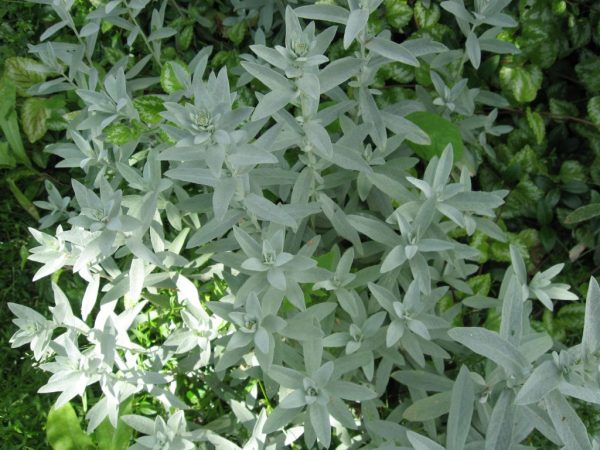Description of the plant Wormwood Louis
Wormwood Louis (ludoviciana, artemisia) is a semi-woody, southern, perennial shrub. Its healing qualities have long been known. Tinctures, ointments are made from wormwood, its extract is added to cosmetics. It copes well with skin diseases. Used to strengthen hair and make it silky.

Description of the plant Wormwood Louis
Description
It is a plant with silvery-gray foliage. It gives off a pronounced aroma. Branches strongly. It grows up to 1 meter in height. Under suitable conditions and soil, it can grow over a meter. The diameter reaches up to 0.5 meters.
The leaves are separated by finger-shaped, oblong segments. All leaves and stem are covered with silky, silvery hairs. It has yellow inflorescences of 0.5 cm. It blooms in June and continues to bloom until the end of August. Some varieties continue to bloom until October.
The wormwood tastes very bitter. Therefore, medicines from flowers and leaves are used most often for external treatment.
Distribution locations
It spreads over the Mediterranean regions of Asia and Europe. She needs dry, rocky areas to grow normally. It takes root well in drained soil. Planting is allowed both in partial shade and in bright sun.
Wormwood Louis is drought tolerant. If the summer is rainy, with high humidity, the central part of the stem begins to rot.
Shrub variety
Biologists count over 250 varieties of bitter shrubs.
Here are some types of Louis Wormwood:
Artemisia. This species includes the following subspecies of shrubs:
- Artemisia Schmidt is a decorative perennial species. Not a tall bush - up to 30 cm. Unpretentious, frost-hardy and hardy for cutting;
- Artemisia Steller is a spreading shrub. Very grassy and covered with hairs, as if down;
- Artemisia Hybrid is a perennial with a long root. Grows up to 40 cm in height. Blooms in early autumn.

Wormwood has many varieties
Ludoviciana. Tall bush with long roots. Blooms from August to September. It is also subdivided into subspecies:
- Valeri Finning - grows up to 80 cm. Branches poorly. It has short shoots. Endowed with gray leaves and a white top;
- Silver Queen (Silver Queen) - grows up to 70 cm in height and strongly branches. Wormwood Louis Silver Queen is a very beautiful variety with silvery leaves. Many are planted in their gardens for decoration. Silver Queen is also attractive because there are ears at the base of the leaves.
Pontic wormwood. Perennial with long roots. It grows upward, reaching one meter. Blooms in August. And he gives the seeds in October. Reproduction of the Pontic variety is possible both vegetatively and by scattering seeds.
Pursha. Also a tall shrub - up to 70 cm. The stems are highly branched. The leaves are covered with hairs on both sides. Blooms in July.
Care rules
Louis wormwood can often be found in garden plots. After all, the shrub looks attractive, and the healing properties attract gardeners. In addition, the perennial does not require special care. He is able to grow independently under optimal conditions.
Nevertheless, there are several recommendations for caring for this handsome man:
- Planting Louis seeds is best done on sandy soil. No fertilization required.
- It is recommended to choose a sunny place, but partial shade is also acceptable.
- Watering is rare. Only if the summer is hot and dry. Basically, the seedlings "get drunk" from the rain. It is necessary to pour water at the very root. So that the soil is deeply saturated. Between watering, you need to take a break of several days. This will make the shrub immune to drought. In addition, watering breaks stimulate the formation of new roots.
Plant propagation
The wormwood of the Ludovic variety is propagated by seeds. But this perennial can also be propagated by shoots, if the bush is large enough and branched. Another breeding method is rhizome division. To do this, dug the bush, shake off the earthen lump and carefully divide the root into several small parts. They are placed in water or planted by treatment with a manganese solution.
Seed propagation is best done in a greenhouse in spring. Transplant the hardened seedlings into the ground to a permanent place. With this method, it is important to ventilate the greenhouse, creating a warm greenhouse effect on the floor.

